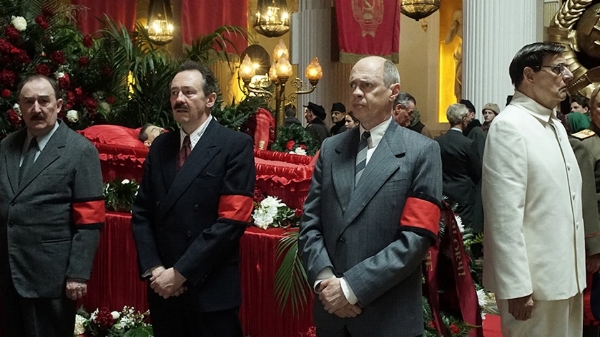“Hereditary,” the feature debut from writer-director Ari Aster, is a haunted house tale that ponders what exactly it is that haunts a house—or a household. With nods to horror milestones including “Rosemary's Baby,” “Don't Look Now,” “The Exorcist,” and more recently, “The Witch,” Aster presents an original and genuinely terrifying story of a family in crisis, suggesting that guilt and secrets (often one and the same) can destroy as surely as any evil spirit.
The film opens with the display of a newspaper obituary announcing the death of the elderly matriarch of the Graham family in the home of her daughter Annie Graham. Then, in a long take, the camera ushers us into that house, floating through an open window and gliding across an artist's studio toward a dollhouse-sized Craftsman with an open side revealing painstakingly detailed furnishings and miniature residents. The camera continues pushing in until the screen is filled by an upstairs bedroom where a figure appears to sleep. With a knock—and utterly seamless editing—the bedroom door swings open, and Annie's husband Steve (Gabriel Byrne) enters the real bedroom to wake their teenage son Peter (Alex Wolff) for his grandmother's funeral.
It's an impressive effect, bringing to mind the scene from The Shining in which the the camera zooms in on a scale model of the Overlook Hotel's hedge maze until the figures of Wendy and Danny come into view at its center. The facsimile house is one of many constructed in meticulous detail by prominent artist Annie (Toni Collette), within which she has recreated, in a series of miniature tableaux, moments of grief and trauma from her past. Her art seems to serve as a way for her to unpack and control her experience, yet the opening juxtaposition of doll- and real house seem to place the Grahams, themselves, in the position of dolls, at the mercy and whims of an unknown artist.
Early on, despite the appearance of normalcy--the well-maintained Craftsman and middle-class lifestyle--something feels off about the Graham family. Returning from the funeral, rather than commiserate, members abruptly disperse--Annie to the sanctuary of her studio, Peter to his bedroom to smoke a bowl, and daughter Charlie (Millie Shapiro) to her room and the solace of her own art, a collection of dark scribblings and vaguely humanoid found-object sculptures.
It soon becomes apparent that the Graham's is a house of secrets. Among her mother's belongings, Annie is surprised to discover spiritualism texts and a final cryptic handwritten message from her mother. At school, awkward, blank-faced Charlie snips the head off a dead bird with scissors and quietly slips it into her pocket. Peter's more mundane secrets involve sneaking out to party with his friends. By contrast, relatively normal husband Steve seems distanced from the family simply by his obliviousness to what is going on around him.
As the signs of an occult influence accumulate (mediums and seances, shadows and spirits, sleepwalking and prophetic dreams), the resulting eruption of suppressed anger, resentment, and guilt within this household remains utterly human, yet poses as much a threat to the family as any supernatural force.
It is this balance between the recognizably human and the supernatural that raises Hereditary far above average horror movie fare. One almost feels that the supernatural element could be removed from the film, and a very strong dysfunctional family drama would remain. In large part, this is a testament to the power of Toni Collette's performance, which builds slowly and incrementally from grief to panic and to utter hysteria. Wolff and Shapiro, too, deliver performances that turn on emotions not articulated, but visible in a hurt glance or a slumped shoulder.
Like Annie with her rooms, director Aster asserts an assured, deliberate control over the proceedings, studiously avoiding the sort of jump-scares that litter most current horror, attending instead to a careful and constant ratcheting up of dread. And the cinematography by Pawel Pogorzelski, like the plot, strikes a creepy balance between the realistic and the phantasmagorical through the skillful use of icy tones, shadows, and long, slow camera movements.
The result is powerful and upsetting. But be warned: Hereditary is not the sort of roller-coaster horror film that gives you a scream and a laugh, then lets you shrug it off. Aster's vision is brutal and likely to haunt you for days.














